Corneal Topography
What is Corneal Topography?
Corneal topography is a non-invasive medical imaging technique for measuring and mapping the cornea, which is the clear curved structure at the front of our eyes.
A specialised camera takes thousands of three-dimensional and cross-sectional images of the cornea, to give an accurate "map" of the shape, curvature and thickness of the cornea.
Corneal topography is very important when planning cataract surgery, and will help to determine the type of intraocular lens that will be implanted to provide the best visual outcome.
Irregular corneal curvature is known as astigmatism, and will cause distorted vision. Astigmatism can be corrected with glasses, contact lenses or laser surgery. In the case of cataract surgery, a "toric" intraocular lens can be used to neutralise the astigmatism.
Wearing contact lenses can cause some temporary changes to the shape of the cornea, so if you are a contact-lens wearer you may be asked to leave them out for a few days before your examination to ensure the best results from the topography.
Similarly, if you suffer from dry eyes the surface of the cornea can become very rough and irregular. Your doctor may ask you to use some frequent moisturising eye-drops for a few days before your topography scan, to get the most accurate results... especially if planning cataract surgery.
Corneal topography is also used to diagnose keratoconus, which is a condition causing very irregular curvature and thinning of the cornea.
Keratoconus can be a progressive disease and corneal topography is a very useful tool to accurately monitor the shape of the cornea over time to look for changing curvature.



